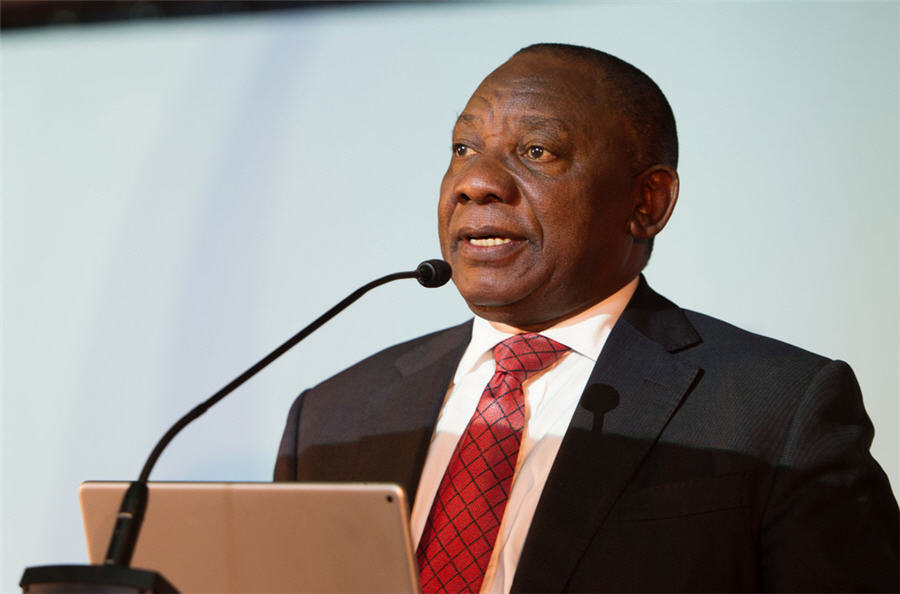
South African rescuers ended their attempts on Thursday to find anyone left in an illegal gold mine where at least 78 people died during a police siege, as a local volunteer described the horror of extracting their bodies from deep underground.
Police had encircled the mine since August and cut off food and water supplies to try to force the miners out so they could be arrested, resulting in what the GIWASU labour union called the worst state-sponsored massacre since the end of apartheid.
Since Monday, rescuers have used a cylindrical metal cage to pull up 78 bodies and 246 survivors, some of them emaciated and disorientated, in a court-ordered operation at the mine near the town of Stilfontein, southwest of Johannesburg.
The survivors, who are mostly from Mozambique, Zimbabwe and Lesotho, have been arrested and charged with illegal immigration, trespass, illegal mining and other offences.
The police have said they were enforcing a government crackdown on illegal mining and that to have allowed food and water down during the siege would have meant “allowing criminality to thrive”.
Mzwandile Mkwayi, 36, was one of two volunteers from the local township of Khuma, where most of the miners lived, who spent three days going up and down in the cage to bring out the corpses and survivors.
“I was scared. Those people were happy to see us, they were very happy. We told them ‘we are here to help you, please don’t die’,” he told Reuters on Thursday near the opening of the mine shaft.
“I put the bodies in the bags with my own hands. It was my first time to see a pile of dead. It will traumatise me for the rest of my life.”
Asked why he had volunteered, Mkwayi said: “Those people are our brothers. We’re living with them.”
On Thursday morning, the cage was sent down one last time, with a camera inside, which police described as a way of verifying information from volunteers who went down on Wednesday evening and said they could see no one left in the mine.
Reuters reporters at the scene saw the cage being lifted out empty and being driven away in a truck.
Mannas Fourie, the CEO of a rescue company involved in the operation, said it was possible some of the dead had been left in the vast network of deep tunnels and would never be found.
“If somebody got lost, you will never know whether somebody got left behind,” he told Reuters.
Illegal mining cost South Africa over $3 billion last year, according to the mining minister. Typically, undocumented miners move into mines abandoned by commercial miners and seek to extract whatever is left. Some are under the control of violent criminal gangs.
Ministers have consistently described the Stilfontein miners as criminals and one spoke of the need to “smoke them out”.
But local community members, civil society groups and labour unions have denounced the Stilfontein crackdown, with GIWASU condemning what it called “the dehumanisation and criminalisation of these poor, desperate miners”.
Thembile Botman, a community leader in Khuma, said local residents had been saying for months that people would die, and the deaths could have been averted had the rescue operation taken place sooner.
“The minister said they were going to smoke them out and they did. Congratulations,” he said, speaking with bitter anger.
Throughout the rescue operation, police and contractors operating the cage have not been going down themselves but rather have relied on local volunteers.
Police have not explained why they were not going down themselves but Fourie said it was better for the volunteers to go because they knew the miners and could gain their trust.
During the siege, police removed a pulley system the miners had previously been using to get in and out and waited outside the opening for them to come out, but community leaders and lawyers have alleged there was no way for them to climb out.
The pulley was later restored and removed several times during months of negotiations and legal action, according to civil society advocates and community members involved in supporting the miners.
The police have denied blocking the miners’ exit and said more than 1,500 miners did get out by their own means between the start of the siege in August and the rescue operation, which began on Monday.
(Additional reporting by Tim Cocks and Siyabonga Sighi in Stilfontein and Tannur Anders, Bhargav Acharya and Sfundo Parakozov in Johannesburg; Writing by Estelle Shirbon and Alexander Winning, Editing by Angus MacSwan and Alison Williams)
Comments